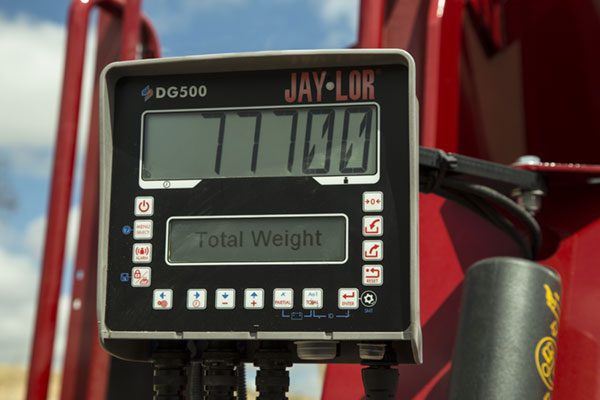Consistent feed composition and delivery are generally recognized as key components for optimal animal health and maximizing milk production and profitability. Equally important are accurate measurement and tracking of feed intake for determining feed efficiency of milk production and income over feed cost (IOFC) as key indicators of economic performance and profitability. Yet this is rarely done on most dairy farms, though the technology is readily available, and easy to use as part of the weighing system of your TMR mixer.
 TMR scale indicators increase in capability from basic models that only provide the total, partial or net weights of the current load, to models that can store and record data for the batching and delivery of rations for numerous animal groups. Certain models can even record weights of refusals, include them in subsequent rations, and store and record data for different operators. Data can be loaded and retrieved manually or wirelessly, and even managed remotely by computer software, enabling full management of the feeding system.
TMR scale indicators increase in capability from basic models that only provide the total, partial or net weights of the current load, to models that can store and record data for the batching and delivery of rations for numerous animal groups. Certain models can even record weights of refusals, include them in subsequent rations, and store and record data for different operators. Data can be loaded and retrieved manually or wirelessly, and even managed remotely by computer software, enabling full management of the feeding system.
Track TMR batching and ingredient use: When batching using ration formulas, the indicator can be set so that the amount required for a given ingredient comes up in sequence, and then counts down to zero as it is added. This increases accuracy and ease with which the target amount of the ingredient is achieved, decreasing ration variability and ingredient waste. A progressively faster emitting sound or flashing light can also be added to assist in knowing when the target amount is close to being reached. As each ingredient is added, the amount is recorded against the date, time and target amount. This data can subsequently be reviewed for monitoring and improving batching performance, as well as inventory control.
Track TMR delivery to groups of cattle: When batches are fed out, the indicator will record the date and time of delivery, along with the amount delivered to each pen. By keeping a record of this data, one can more accurately adjust the amount of feed required based on the amount refused at the end of the feeding period, and the number of animals leaving and entering the group, and thus minimize wastage. This data, along with a record of the numbers of animals in the group, their days in milk, and actual milk production, also provides the nutritionist with the ability to calculate feed efficiency and evaluate the performance of the herd and feed ration in relation to industry benchmarks to better determine if adjustments are warranted.
Use data to improve operator and animal performance: It is generally accepted that feed intake is a major determinant of milk production, and that variation in feed mixing and delivery can have an adverse effect on intake and milk production. This often becomes more pronounced as farms get larger and the responsibility for feeding passes to workers other than the owner or manager. Collection of batching and feeding data provides the manager a tool to monitor and improve operator performance. It also provides a method to objectively evaluate the effect of feeding management and/or ration formulation changes on animal performance.
Use data for inventory control: Control of feed inventory is central to efficient milk production and optimal animal health, as well as profitability. Feed management technology makes it easy to calculate the rate of feed usage to better anticipate ingredient changes and know when to order purchased ingredients and eliminate costly shortages. This is also at the core of enabling accurate calculation of IOFC for a period of time.
It is important to remember: “You can’t manage what you don’t measure”. Your Jaylor Dealer can help you decide which TMR Feed Management option may be best for you … “Because Nutrition Matters®“.


